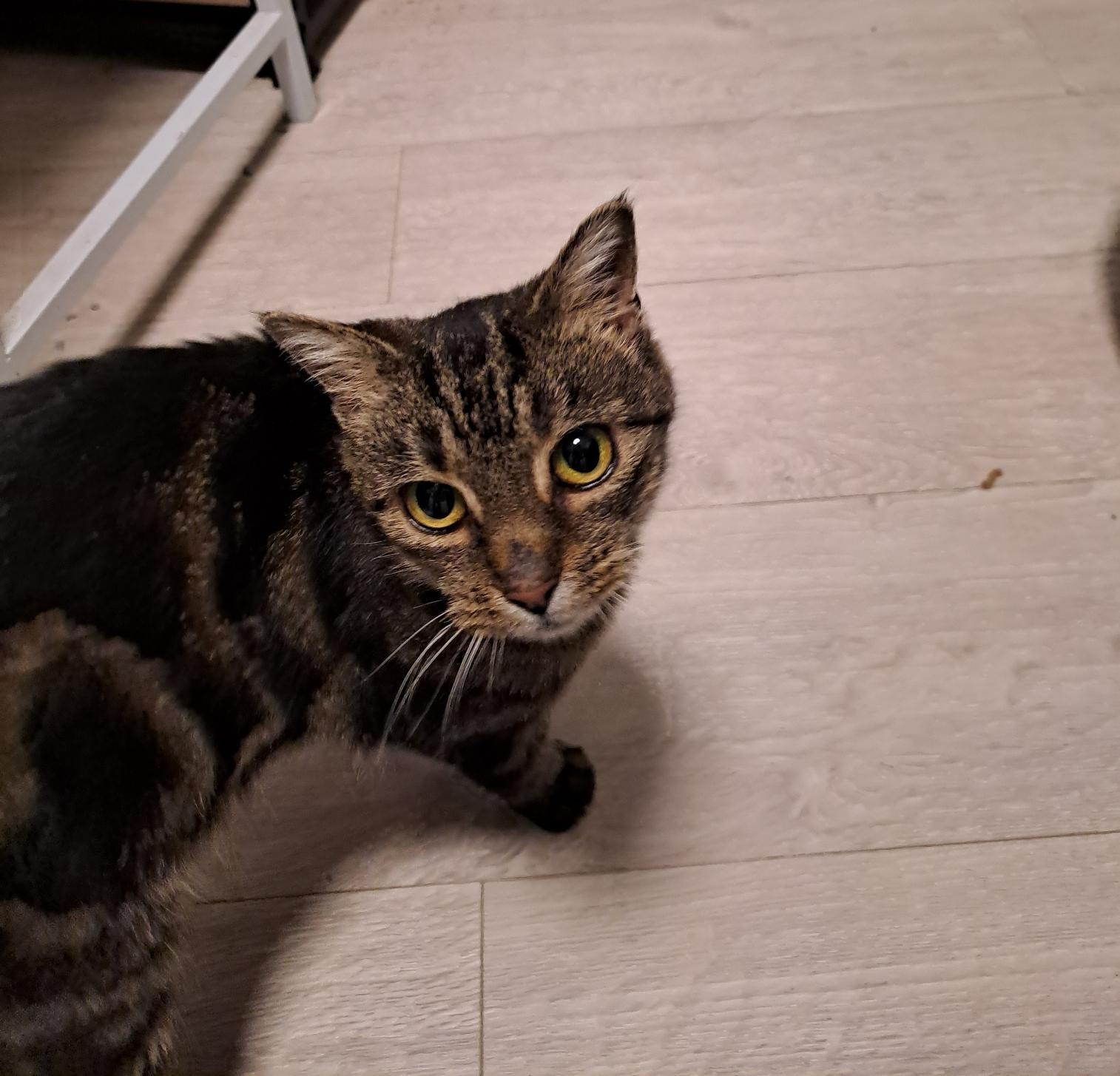News & Media > Editorials > Inside the piggery of the VFF Pig Council President
Inside the piggery of the VFF Pig Council President
“The Victorian pork industry has a collective commitment to pig welfare. Our members adhere to industry best practices and continually invest in research, technology and training to improve animal care standards. We follow the rules and laws set by federal, state and local governments, and these are strictly enforced.” - David Wright, Victorian pig welfare inquiry, 2024
During the public hearings for the Victorian parliamentary inquiry into pig welfare and in the weeks following, the President of the Victorian Farmers Federation (VFF) Pig Council, David Wright, gave evidence about practices used at his piggery and by the entire pig meat industry. With statements about the pork industry's adherence to “industry best practices,” and commitment to animal welfare, he painted a picture of idyllic pig farms filled with contented pigs and hardworking farmers, under threat from vindictive, aggressive activists, determined to paint his industry in a bad light.
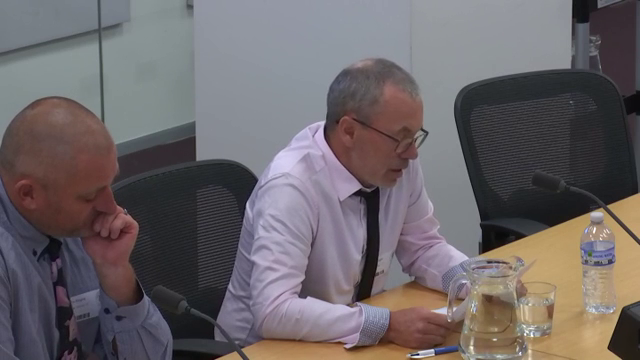
We knew there was more to the story. So we decided to prove it.
David Wright is a co-owner of EcoPiggery, a large-scale, ‘farrow to finish’ piggery in Leitchville, northern Victoria. Far from the image of a family farm painted by industry representatives during the hearing, EcoPiggery sits on a deserted road with no house on the property, or anywhere nearby. The closest neighbouring property is 2km away on a dairy farm, seemingly not connected to the piggery at all.
This commercial factory farm is a joint venture between Wright, George Keath (deceased), whose family owns Midland Bacon, and Colin Sinclair, who owns and manages the Benalla slaughterhouse. Pigs from EcoPiggery are killed at Benalla, in the very same gas chambers we exposed last year. While David Wright implied that he knew Keath and Sinclair personally during the inquiry, at no point did he disclose his business relationship with them.
In the months following the hearings, investigators collected evidence of how pigs are confined and handled by workers at EcoPiggery, which FTP is now publishing.
Here’s what was found:
- Sows confined in farrowing crates, many surrounded by dead and dying piglets and covered in flies.
- Sows with painful pressure sores and bruises from lying on hard, slatted floors and from their skin rubbing against metal bars.
- Floors and food covered in maggots.
- Piglets becoming stuck in the slatted flooring, slowly starving to death.
- Sows confined in small metal cages, strikingly similar to sow stalls, for up to a week at a time, despite David Wright claiming that his farm does not use sow stalls.
- Piglets eating the bodies of dead kittens, who share the sheds with the pigs, and starting to eat their own mother's infected wounds.
- ‘Weaner’ and ‘grower’ pigs with painful, debilitating wounds, including abscesses and prolapses, left in filthy pens with dozens of other pigs.
- Buckets full of dead and stillborn piglets, many with obvious signs of predation from cats, rats and other animals.
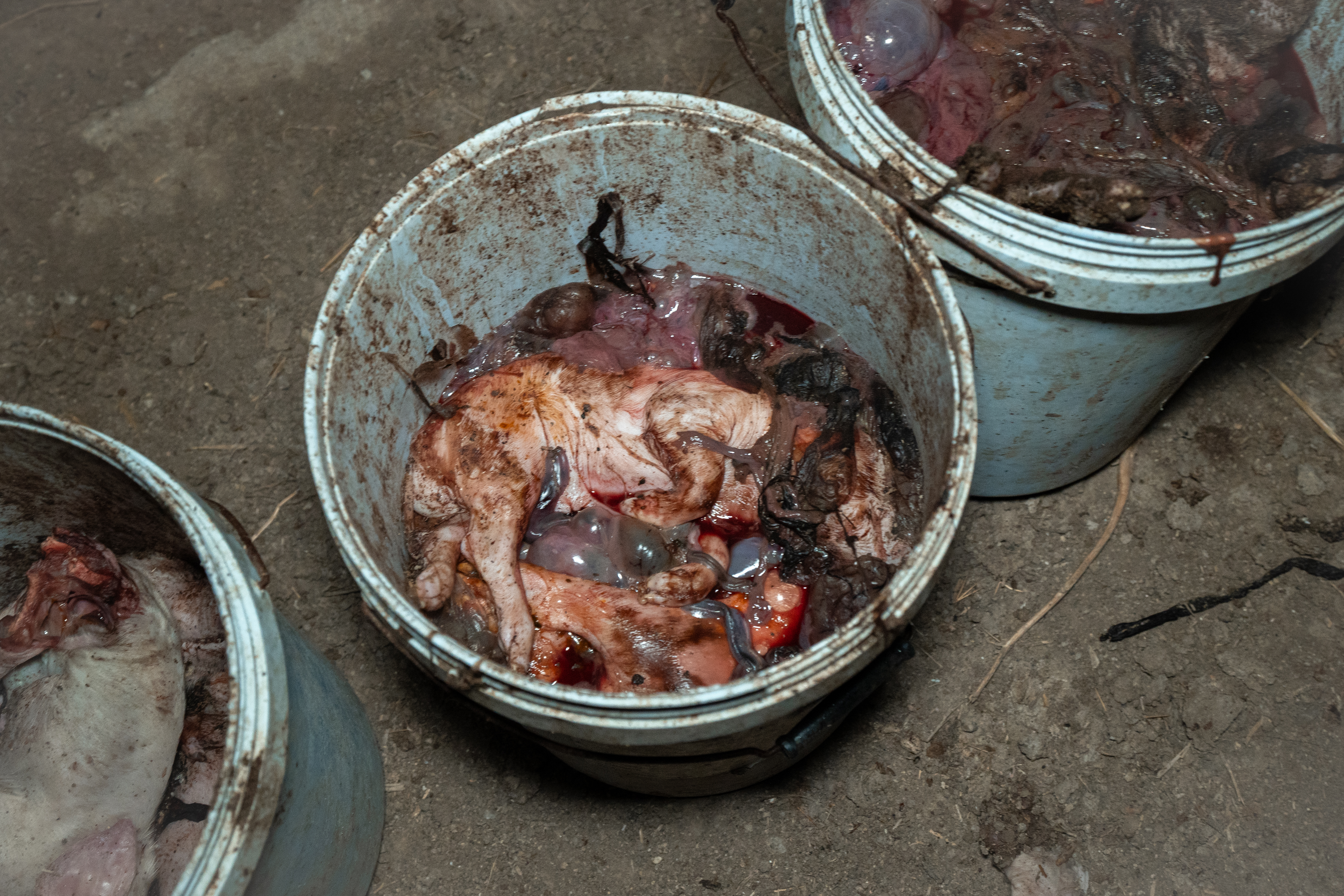
This is the farm belonging to the man chosen by his peers to represent the pig farming industry. This is who spoke on behalf of the industry during a public hearing into pig welfare. This is the standard the pig meat industry holds up as best practice.
The only way to stop this cruelty is to no longer support the industry that causes it.
Farrowing
In the weeks following David’s testimony, investigators visited his piggery multiple times, installing cameras and capturing handheld footage of sows, boars, piglets and male and female pigs from 6 weeks - 6 months old. But it only took seeing footage of one shed, one pig and one night for us to be sure that EcoPiggery was just as horrific as any other commercial factory farm.
She was found in the last farrowing shed entered on a nearly moonless night. She lay in her narrow cage, surrounded by tiny, newborn piglets. Eight of them crowded around her, desperately suckling at her teats, which were bruised, scratched and swollen. Twelve more piglets lay behind her, still covered in blood and fluid, their bodies cold. Every one of them was dead; either stillborn or too weak to survive longer than a few minutes.
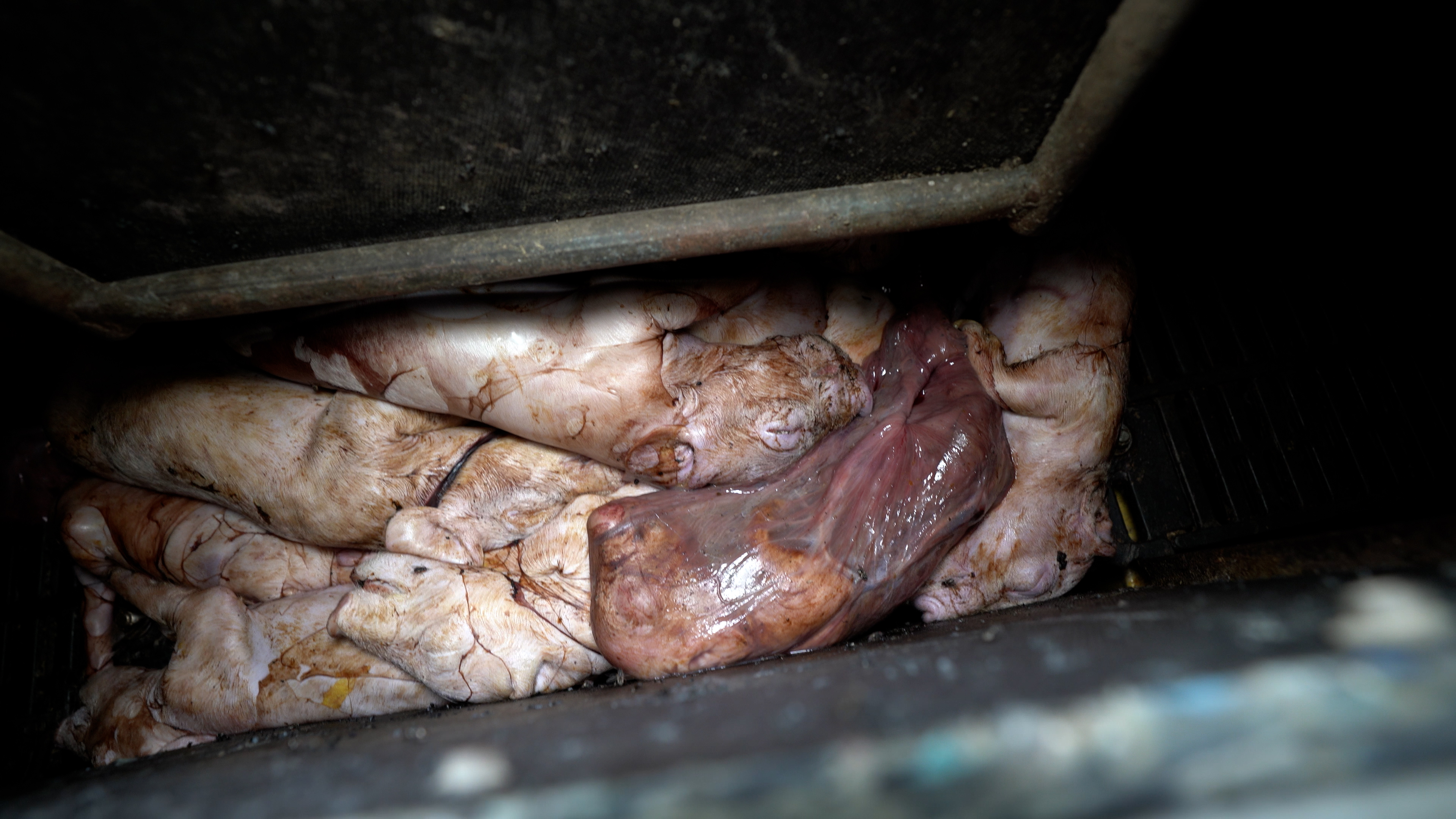
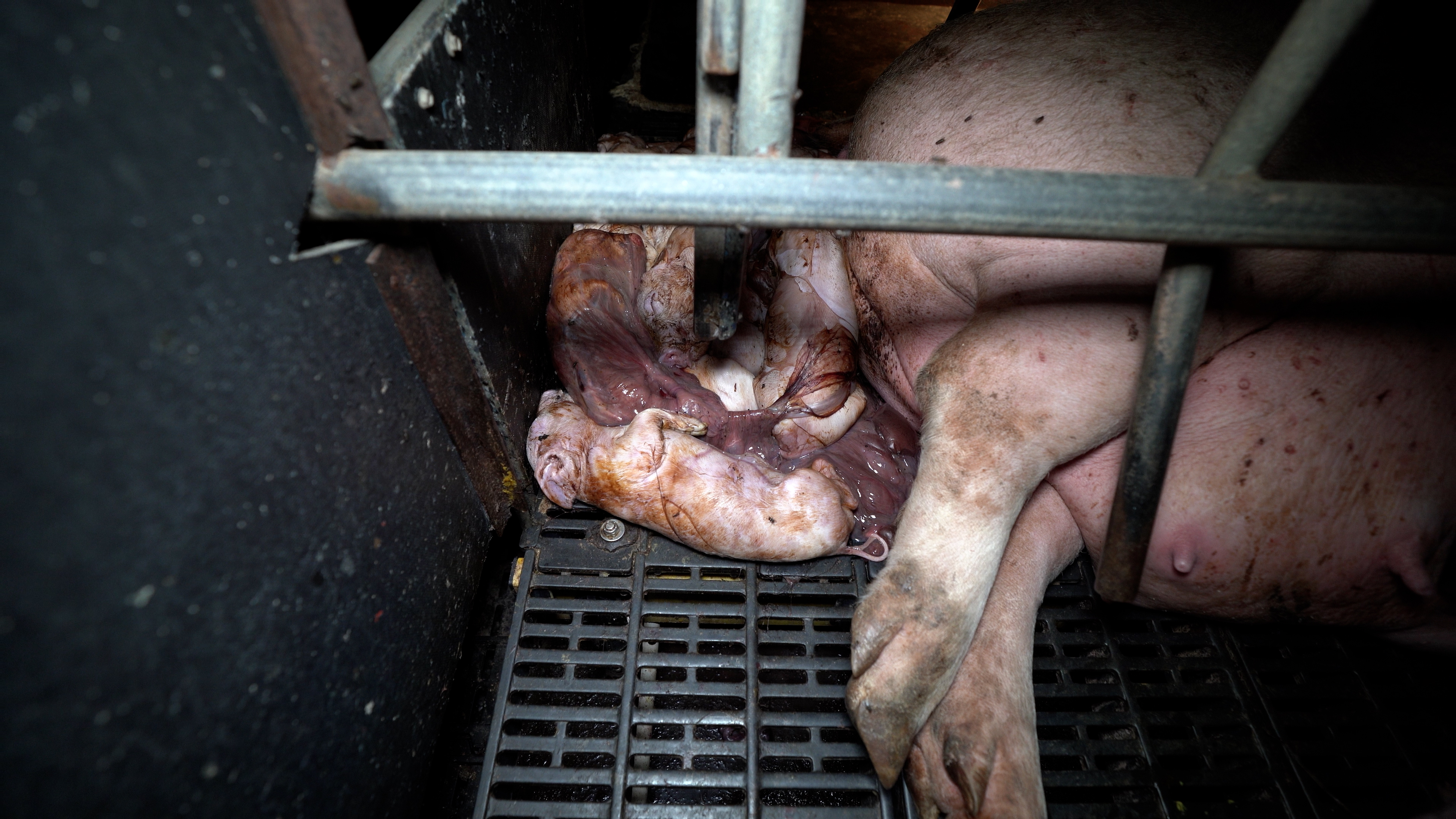
There was one more piglet in the pen. Tiny, shaking, still alive but only just, their delicate leg had become stuck through the slats of the floor and, unable to free themself, they couldn’t reach their mum to drink the milk they needed to survive. Slowly and carefully, they were freed by investigators, who then held them up to their mum, trying to get them to suckle like their surviving siblings. But they were too weak to latch on, only able to shudder and gasp for air as they were gently encouraged to feed. Eventually, they were left, lying next to their mother’s warm body, with a hope that they would pass away peacefully in the night, before a worker found them in the morning and brutally took their life by slamming their head into the floor.
Every farm and slaughterhouse is filled with these stories. Individual tales of suffering which blur together into an indistinguishable haze of horror. Yet we continue to share as many stories as we can and ask the question of as many people as possible; is any of this suffering really necessary? Is tradition, taste and convenience worth more than their lives?
Sow Confinement
Tim KINGMA: On my farm we do artificial insemination, or AI, so when we do that, we confine them for that.
David WRIGHT: We are the same.
Katherine COPSEY: And how long does that typically take?
Tim KINGMA: On my farm it is a bit over 48 hours.
David WRIGHT: On my farm it is five to seven days.
According to APIQ certification standards, sows and gilts are kept in loose housing from at least five days after mating until one week before farrowing
This allows for the confinement of pigs in sow stalls and mating stalls, even while a piggery is certified under APIQ and verified as gestation stall free.
At EcoPiggery, sows are confined in either group housing pens, farrowing crates, mating stalls or dilapidated ‘not sow stalls', where sows look out hopelessly through dirty, metal bars.
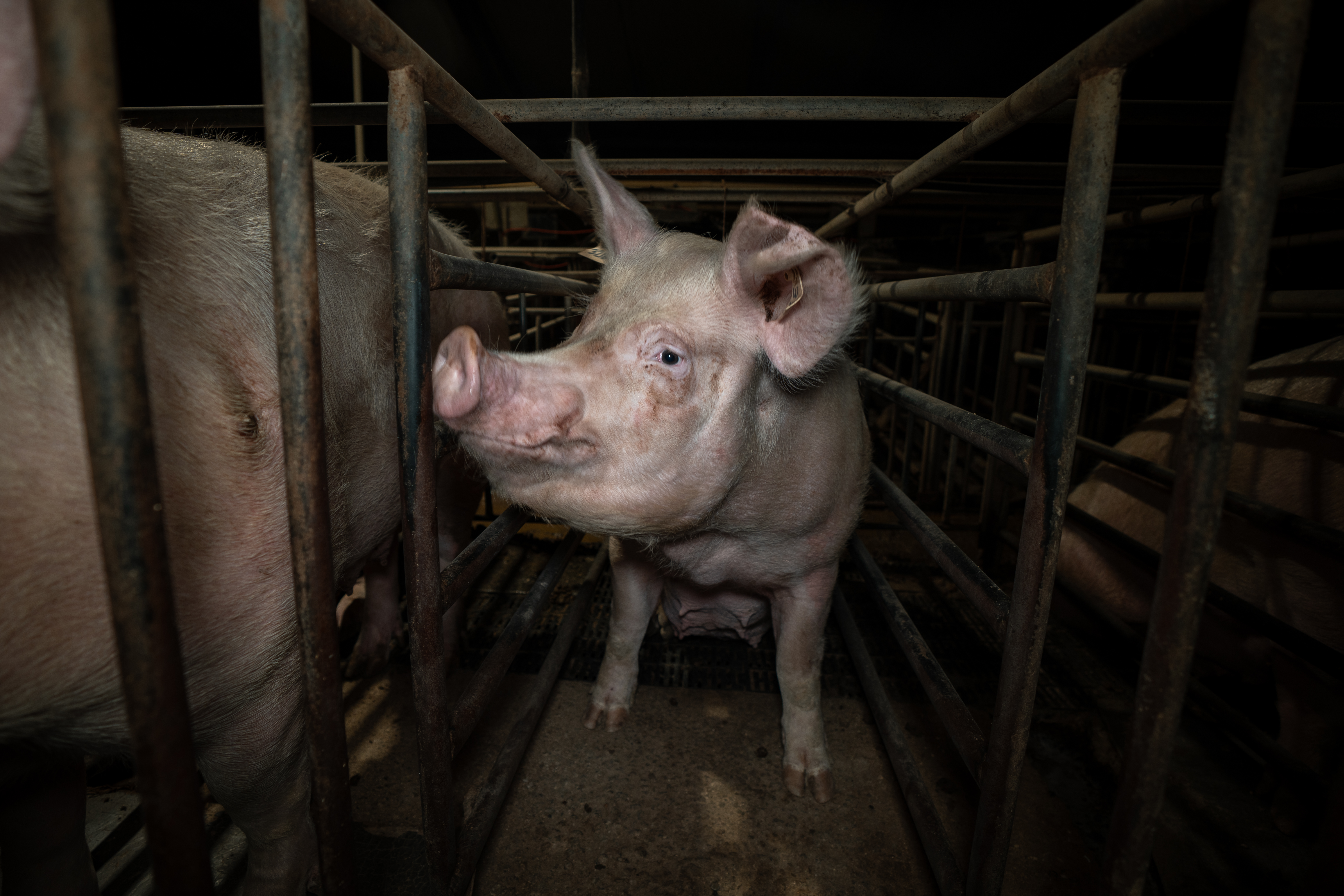
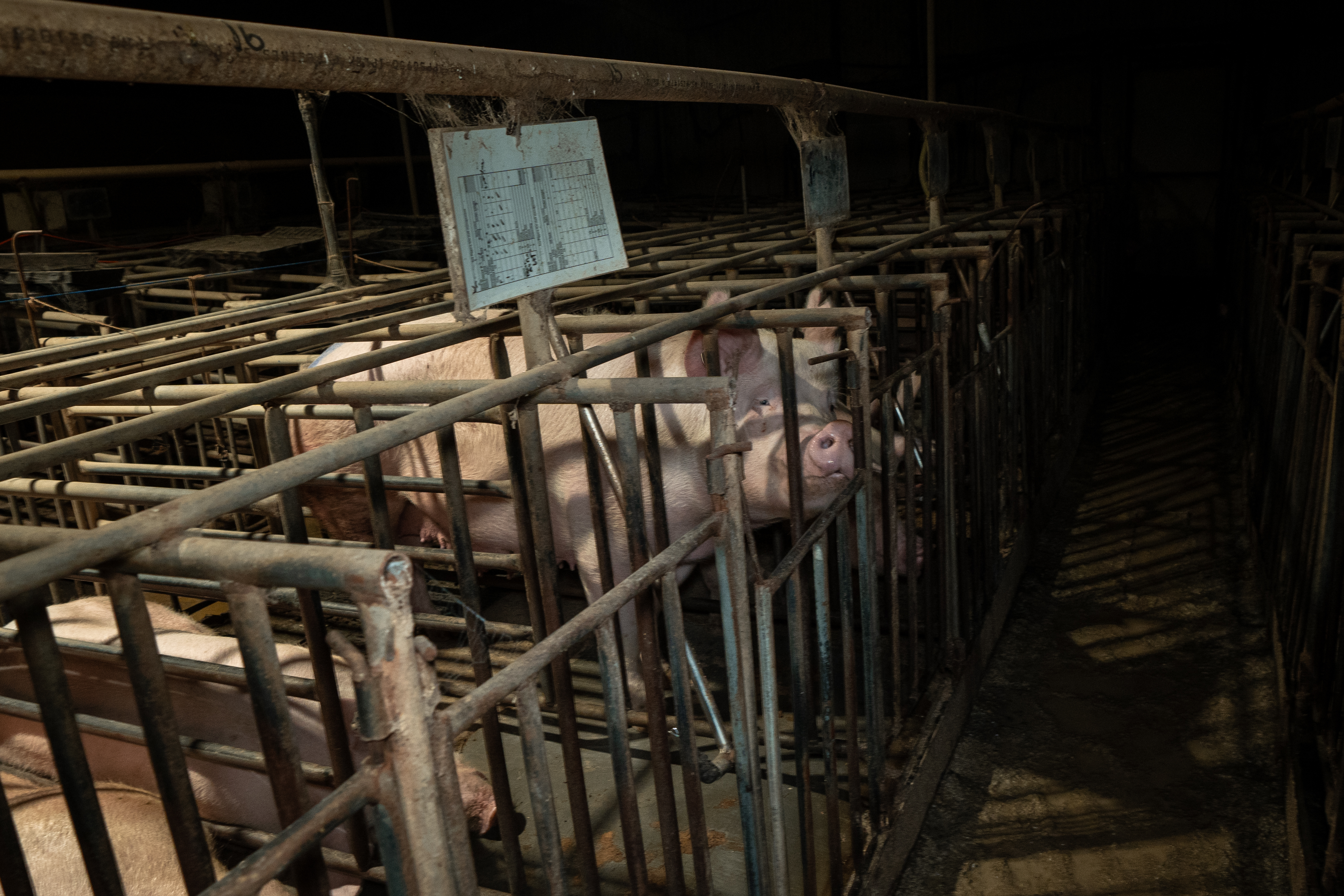
In the group housing pens, sows and gilts (young female pigs who have not yet had a litter of piglets) lie on dirty straw or on hard concrete where they also urinate and defecate. Pigs have no access to the outdoors and are moved between these sheds, mating and artificial insemination stalls and farrowing crates. In one section, sows are housed in group pens without any kind of protective flooring between them and their faeces and urine. They are forced to stand and lie in a river of their own waste.
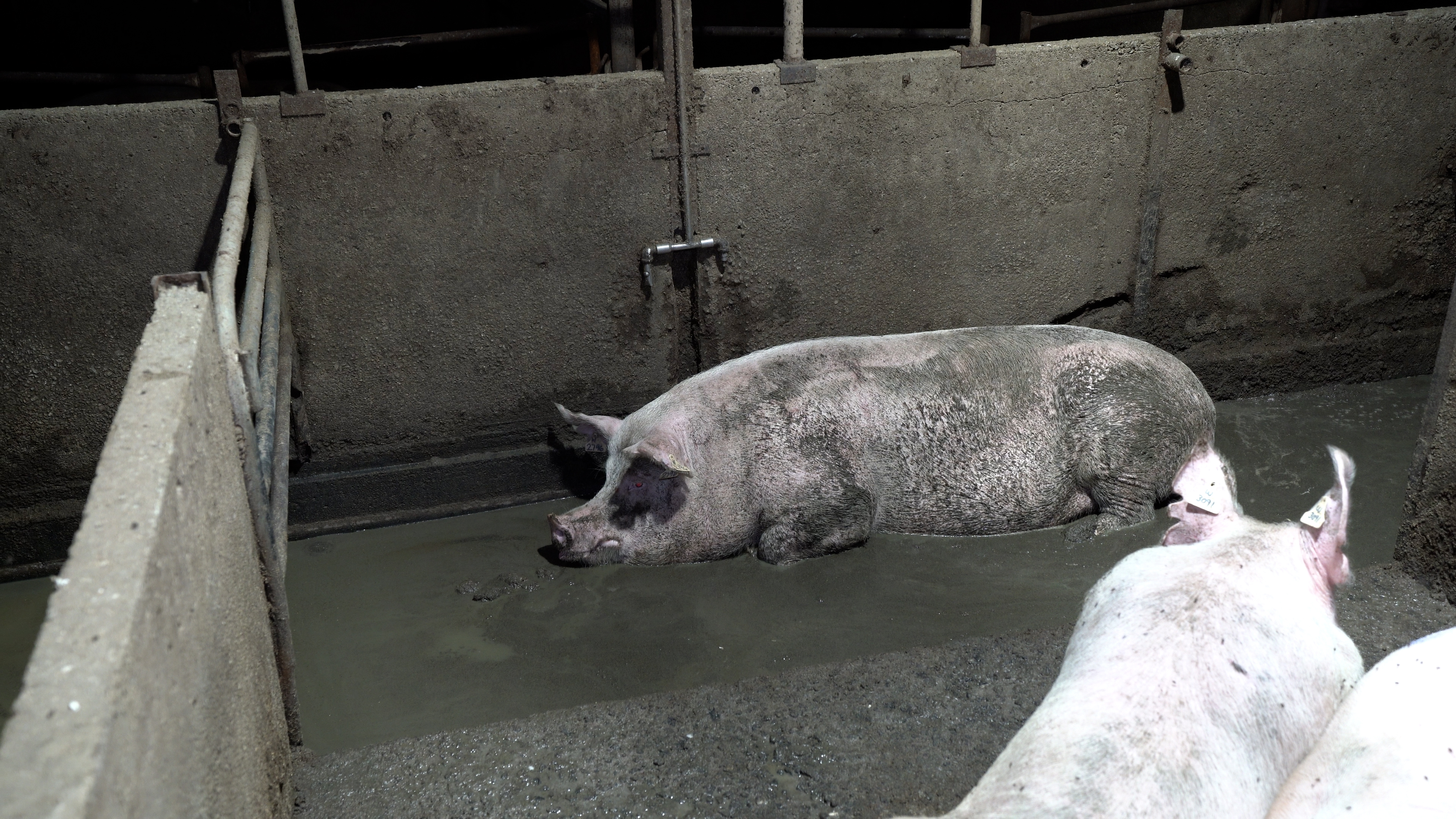
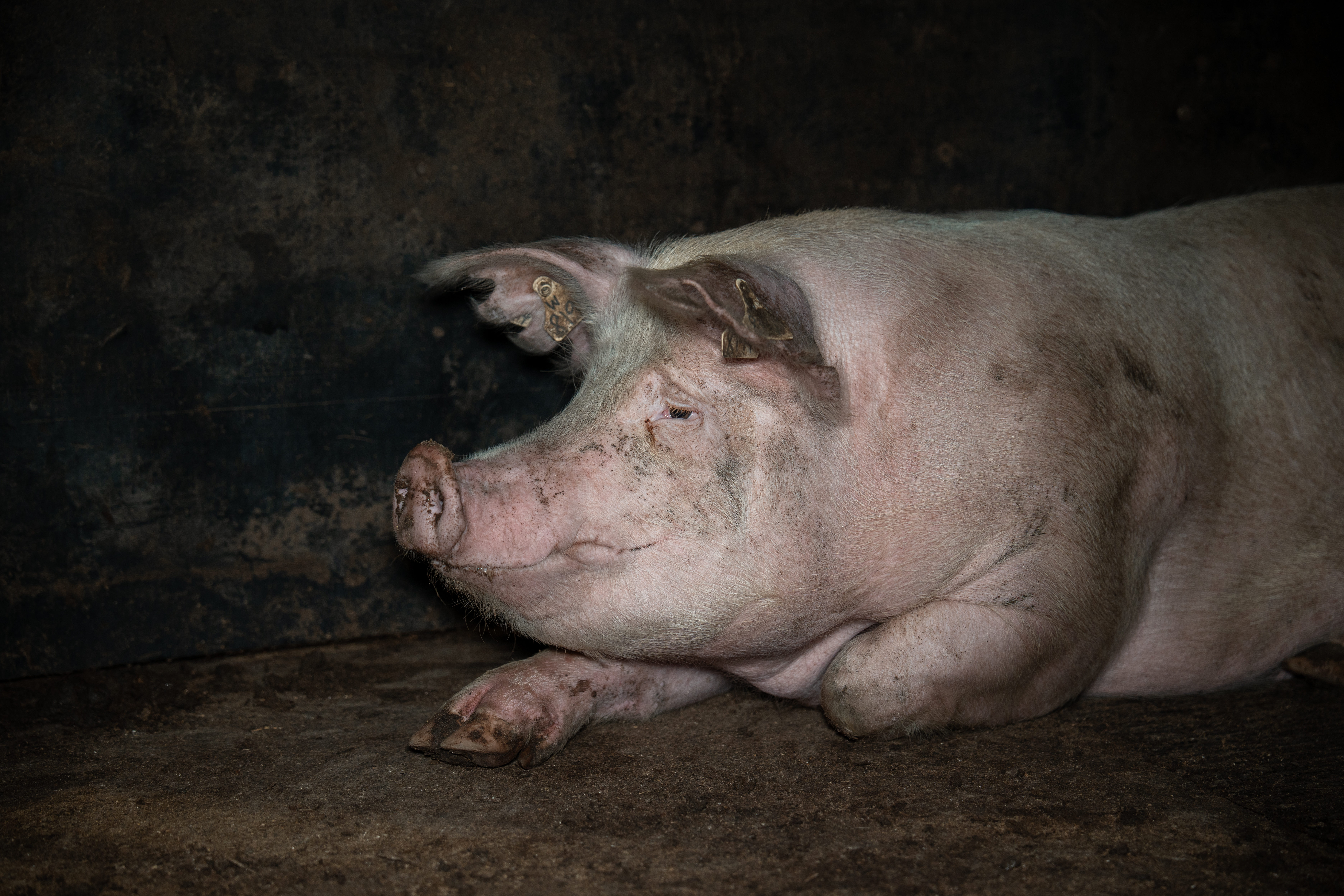
When visiting EcoPiggery, it was discovered that dozens of sows and some boars were confined in small, individual pens in a spider infested, dilapidated shed filled with broken equipment and waste. For some, their confinement was for the purpose of artificial insemination, which was captured by our hidden cameras. For others however, the purpose of their confinement was less clear. While the stalls were slightly longer than a traditional sow stall, they were, nonetheless, remarkably similar. These pigs were left in these filthy stalls for up to a week at a time while workers injected them with boar semen and tested them for pregnancy.
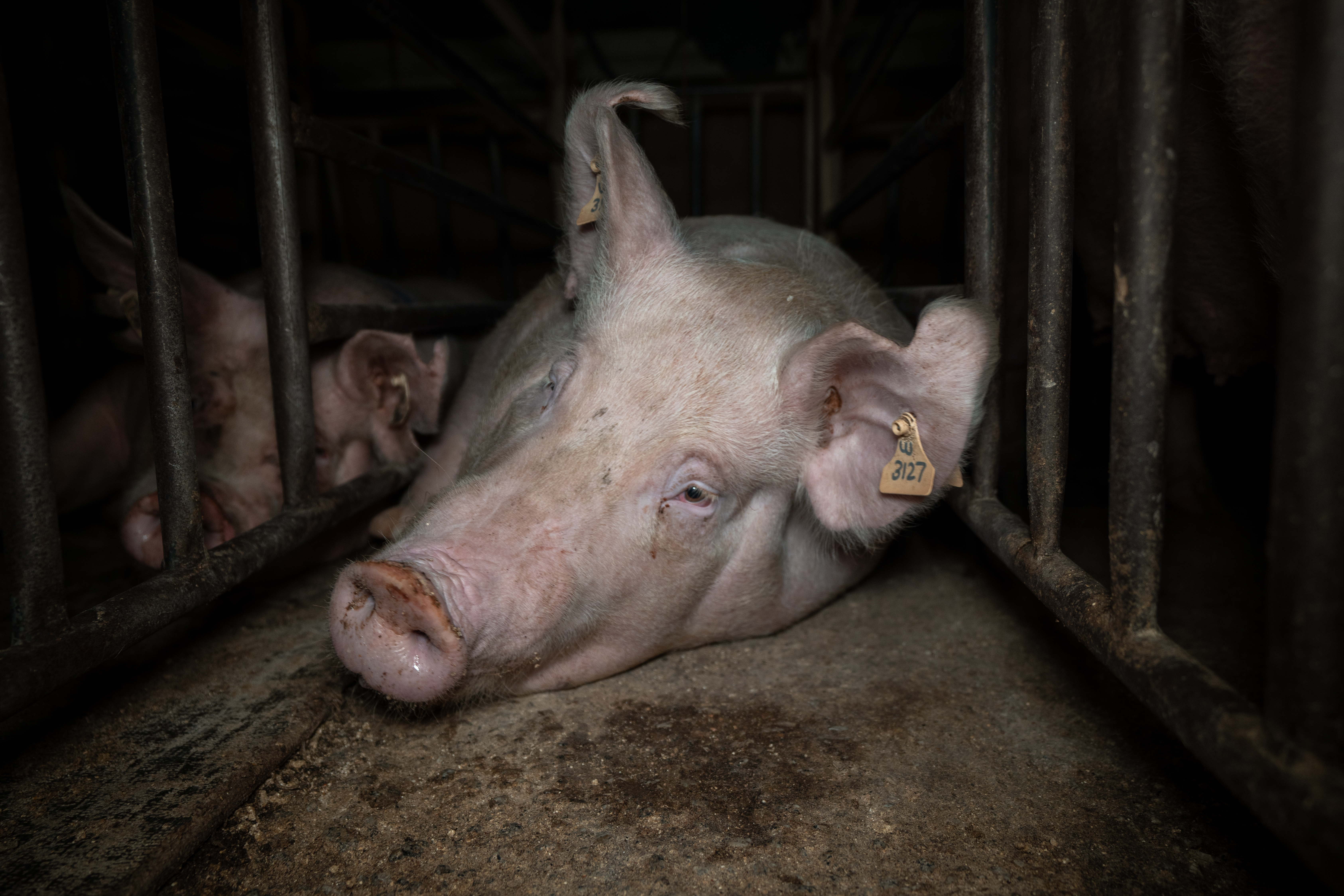
In the farrowing sheds, sows nurse their young in flooded maggot, rat and cat-filled sheds. Many give birth to stillborns who are left in the stalls for long periods of time, attracting other animals who eat the dead and, sometimes, the dying piglets. Sows often have pus-filled pressure sores and bruises from lying on hard floors without room to move and from the pressure of metal bars against their sensitive bellies and teats. In some cases, hungry piglets will start eating at their mother's wounds, causing unimaginable agony.
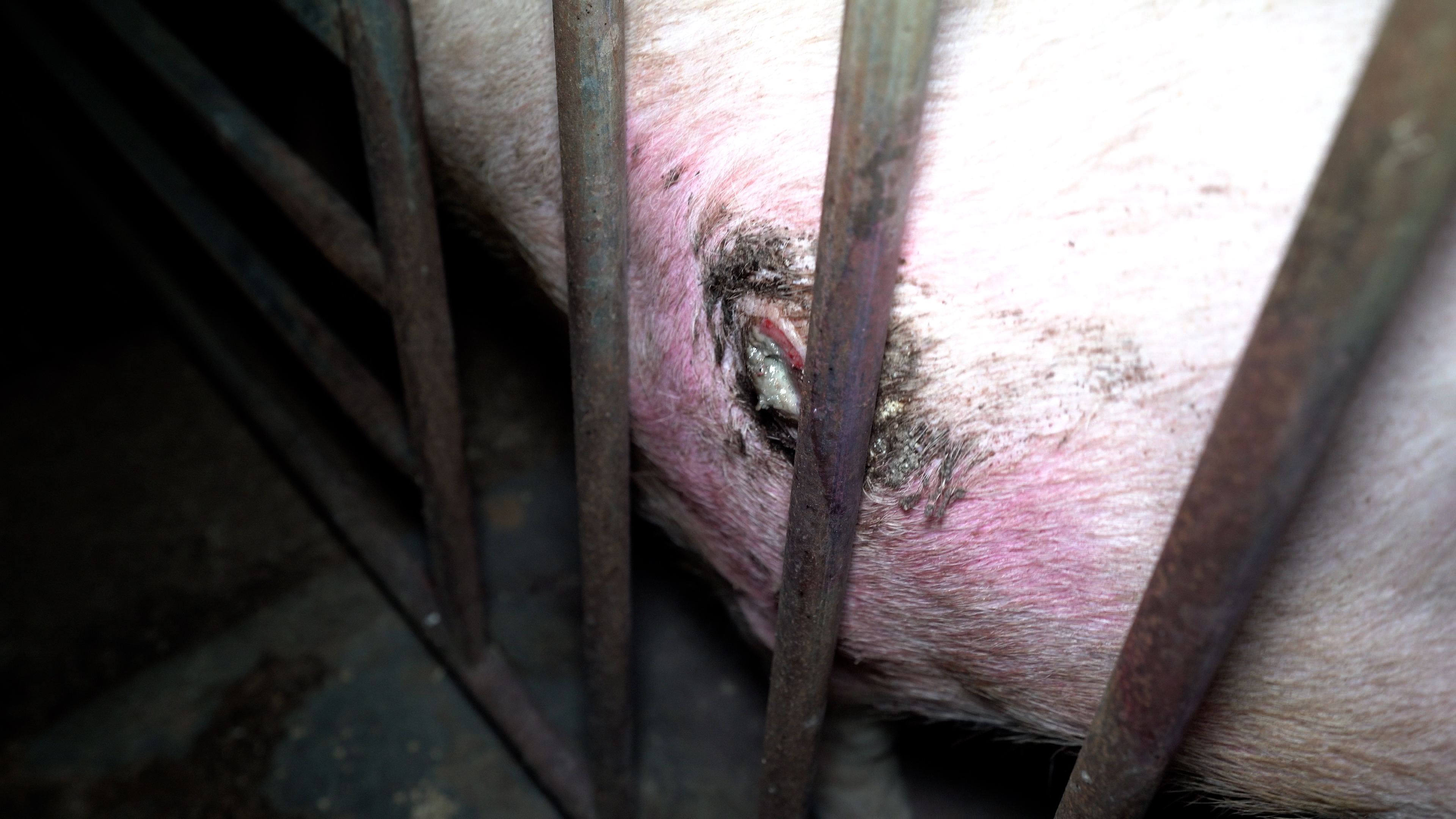
Weaners and Growers
At six weeks of age, piglets are separated from their mothers and moved to ‘weaner pens,’ where they are kept with dozens of other piglets of a similar age. For the next 5 months of their life, they will be moved from pen to pen, until they eventually reach ‘slaughter weight,’ usually at around 6 months old.
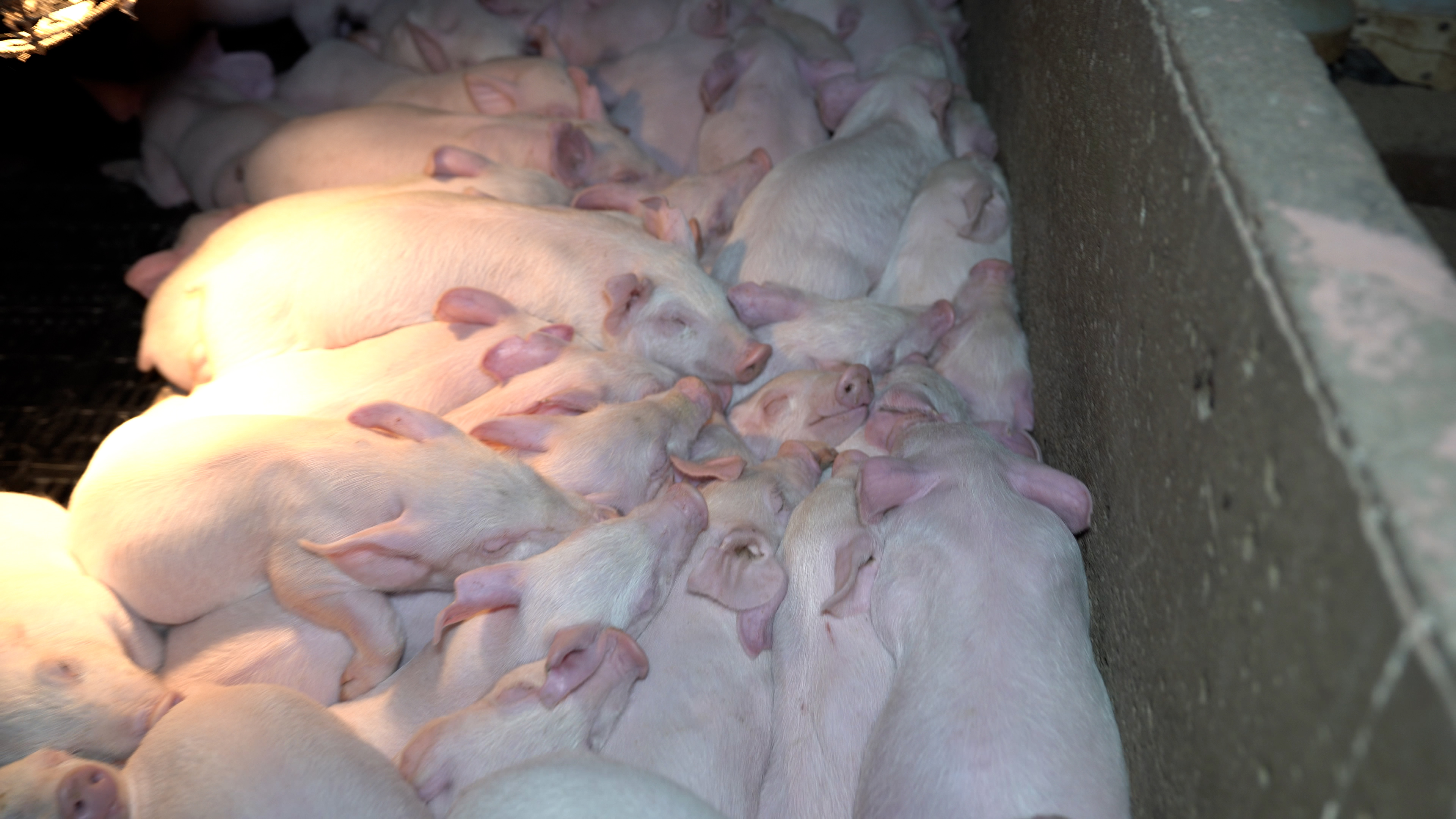
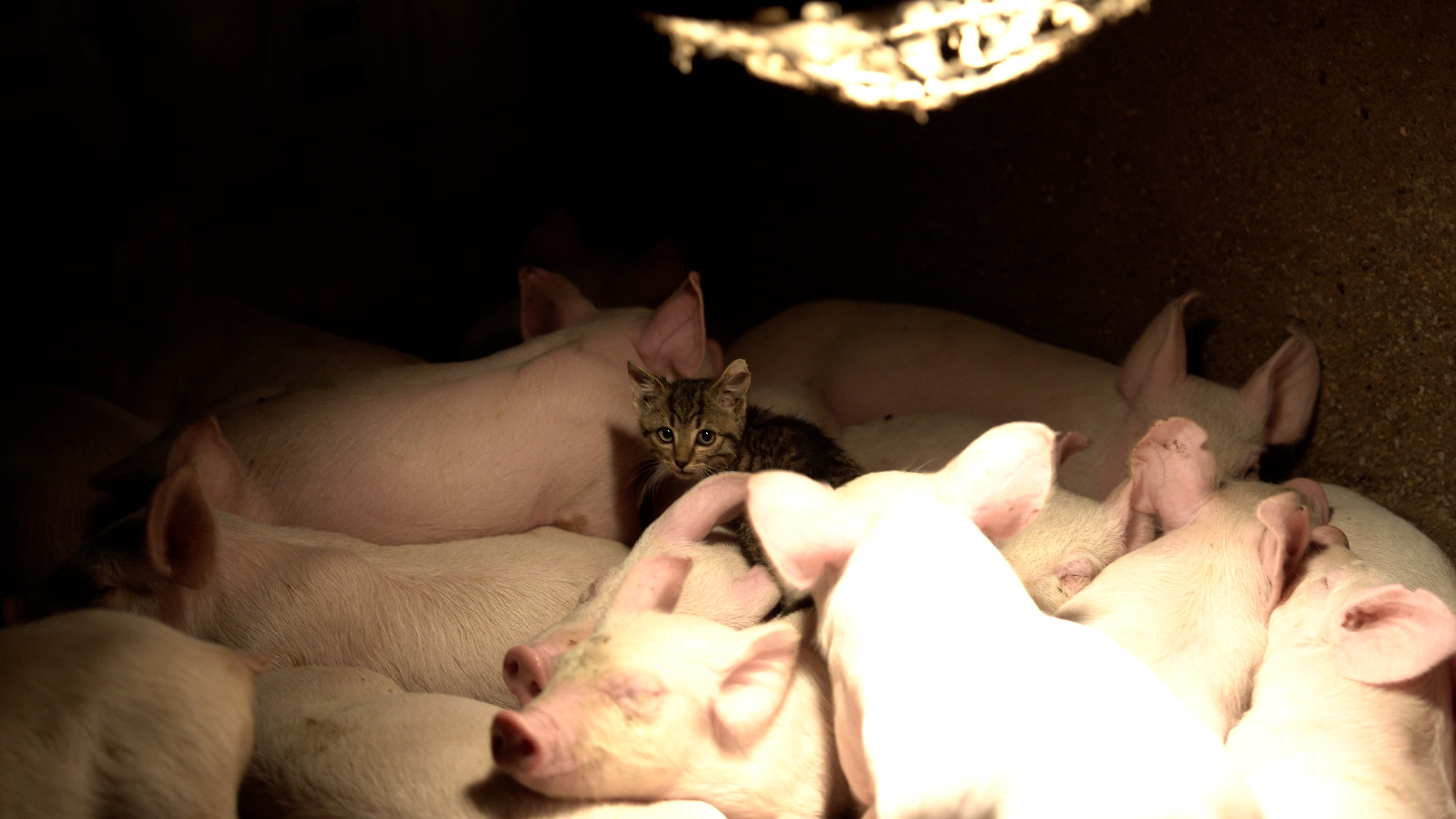
These ‘grower’ pigs are kept in muddy, concrete pens with metal bars and gates. Pigs will often be observed lying in piles for warmth and comfort, while covered in their own waste.
In the grower sheds, pigs were observed with painful injuries. One pig struggled to put any weight on a leg with an infected, pus-filled abscess, while another young pig was documented with a painful prolapse. Pigs were seen eating the dead bodies of kittens, who shared the sheds with them, as well as fighting in the tightly packed pens.
Gracie’s Story
On one of the nights that investigators visited the piggery, they were greeted by an unexpected face.
Just as they were preparing to leave for the night, a small meow was heard and a cat ran up to them where they stood in the shed. Purring excitedly, she rubbed against their legs and happily snuggled into one of the investigators when she picked her up and cradled her.
She was skin and bones, covered in dirt and looked to be only a few months old. It was quickly decided to take her home and give her a life away from the cold and filth of the piggery. In the car, she sat and purred on the laps of her rescuers for the entire three hour journey. She was named Gracie.
Gracie was given a home with FTP's founding director Chris Delforce. Soon after she came to her new home, it became clear exactly how her life on the piggery had ravaged her body. After blood tests, she was confirmed to have Feline Immunodeficiency Virus (FIV), a disease which attacks the immune system, and hyperthyroidism, which causes extreme weight loss. She was also infected with the bacteria clostridia, as well as several other common parasites.
Despite being the size and weight of a 3 month old kitten, Gracie was also assessed to be an older cat, potentially over 10 years old. She had likely spent her whole life fighting for survival on the pig farm.
Gracie is now being cared for and treated for her illnesses. She is a sweet, affectionate cat with a loud purr and a love for cuddles, and for teasing her new cat brother.
While the diseases found in Gracie have not been known to pass from cats to pigs or to humans, instances of zoonotic diseases passed between species are common and potentially incredibly dangerous. Despite what they say, commercial piggeries are far from ‘biosecure’ environments. They are breeding grounds for parasites, infections and life-threatening illnesses which can occasionally cause mass animal casualties, as well as leading to human disease outbreaks and pandemics.
